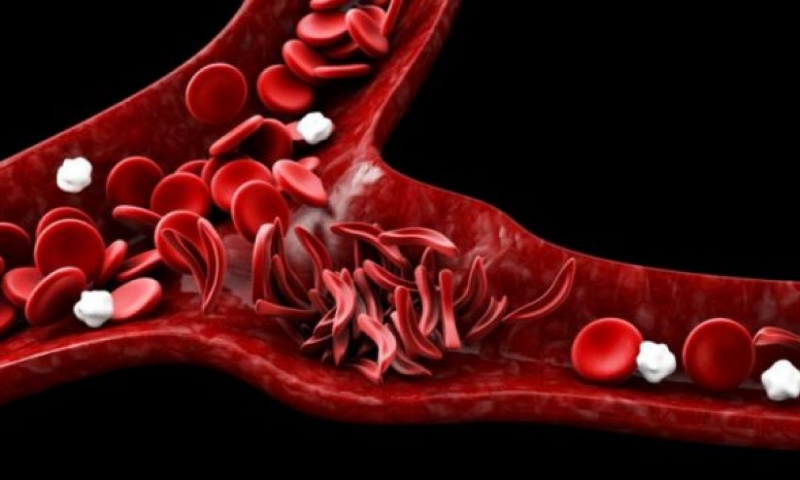Navigating Through the Complex World of Blood Disorders
Blood disorders a group of conditions affecting the blood's function can seem like a complex labyrinth of medical jargon and health concerns. They can be as varied as they are numerous affecting different components of the blood and manifesting in a wide range of symptoms. But this labyrinth is not an impenetrable maze. With knowledge understanding and the right guidance it can be navigated. It's about understanding that while blood disorders are complex they are also manageable.
Understanding blood disorders means more than just knowing their names. It's about understanding the role of different blood components and how their malfunction can impact health. It's about recognizing the signs and symptoms that suggest a blood disorder and knowing how to respond. It's about understanding the risk factors the diagnostic procedures and the treatment options. And most importantly it's about understanding that while blood disorders can be challenging they are not insurmountable.
Types of Blood Disorders
Blood disorders can affect any part of your blood including red blood cells white blood cells platelets or the plasma. Here are some common types:
- Anemia: A condition in which your blood lacks enough healthy red blood cells or hemoglobin.
- Hemophilia: A rare disorder in which your blood doesn't clot normally because it lacks sufficient blood-clotting proteins.
- Leukemia: A type of cancer that affects the body's blood-forming tissues including the bone marrow and the lymphatic system.
- Lymphoma: A blood cancer that develops in the lymphatic system.
- Sickle Cell Disease: A group of disorders that cause red blood cells to become misshapen and break down.
Understanding Blood Disorders

Blood disorders are a diverse group of diseases affecting the production and function of blood cells. These conditions can be present at birth or develop later in life with the potential to affect anyone regardless of age gender or overall health. To comprehend these disorders better we must delve into the complexities of our blood and its crucial role in our body's functions.
The Vitality of Blood
Blood a lifeline circulating in our bodies performs a plethora of essential functions. It carries oxygen from the lungs to every cell in the body removes waste products transports nutrients and hormones helps fight infections and enables clotting to prevent excessive bleeding. Comprising red blood cells white blood cells platelets and plasma any anomaly in these components can trigger blood disorders.
Inherited and Acquired Blood Disorders
Blood disorders can be broadly classified into inherited and acquired categories. Inherited blood disorders such as sickle cell anemia and thalassemia are passed down genetically and usually diagnosed at birth or in early childhood.
Acquired blood disorders develop later in life due to various factors like lifestyle exposure to certain chemicals or other health conditions. Examples include anemia due to iron deficiency leukemia due to mutations in blood cells or thrombosis due to sedentary lifestyle.
- Range of Symptoms: From Mild to Severe: The symptoms associated with blood disorders can be as diverse as the disorders themselves ranging from mild to severe. Some individuals may experience fatigue frequent infections unexplained bruising or bleeding or pale skin. Others may have more severe symptoms like shortness of breath chest pain or episodes of severe pain. The severity and type of symptoms depend largely on the specific blood disorder in question.
- Common Blood Disorders: There's a wide array of blood disorders each with its unique characteristics. Anemia is one of the most common where the body doesn't have enough healthy red blood cells or hemoglobin leading to fatigue and weakness. Leukemia a type of cancer affects the body's ability to produce healthy white blood cells compromising the immune system. Hemophilia is a clotting disorder where the blood doesn't clot as it should causing excessive bleeding.
- Treatment Options for Blood Disorders: The treatment of blood disorders depends largely on the type and severity of the disorder. Some conditions may be managed with dietary changes supplements or medications. Others may require more aggressive treatments like chemotherapy radiation therapy or stem cell transplants.
Blood Disorder in Children
Children can also be affected by blood disorders. Some like sickle cell disease or thalassemia are inherited while others may develop due to infection or other medical conditions. It's important for parents to be aware of the signs and symptoms of blood disorders in children which can include fatigue frequent infections bruising or bleeding easily and pale skin.
Childhood is a period of rapid growth and development. Along this journey children may experience various physical and psychological challenges. These can sometimes manifest as disorders that impact a child's health behavior learning or overall development. Let's delve into some of the common types of disorders that can present in children.
- Developmental Disorders: Developmental disorders like Autism Spectrum Disorders and Down Syndrome are conditions impairing physical learning language or behavior areas beginning during the developmental period.
- Behavioral Disorders: Behavioral disorders include Oppositional Defiant Disorder (ODD) and Conduct Disorder (CD) featuring disruptive behaviors in children impacting school home and social situations.
- Learning Disorders: Learning disorders such as Dyslexia and Dyscalculia are neurologically-based processing problems that interfere with basic and higher-level learning skills.
- Emotional Disorders: Emotional disorders encompass conditions like Major Depressive Disorder and Bipolar Disorder involving persistent feelings of sadness extreme happiness or mood fluctuations.
- Physical Disorders: Physical disorders in children like Asthma Diabetes and Cerebral Palsy affect different body systems and can be either congenital or develop as the child grows.
- Sensory Processing Disorders: Sensory Processing Disorders (SPD) are conditions where the brain struggles to receive and respond to sensory information affecting a child's coordination and behavior.
Conclusion
Blood disorders are a complex group of conditions that can affect individuals of all ages including children. They can be challenging to understand and manage but with knowledge awareness and the right care they can be navigated effectively. Understanding the types of blood disorders being aware of the signs and symptoms especially in children and promoting blood disorder awareness are crucial steps towards demystifying these conditions and promoting better health outcomes.
Remember blood disorders may be complex but they are not undefeatable. With the right knowledge resources and care they can be managed effectively. As we conclude this article we encourage you to continue your exploration and learning about blood disorders. There's a wealth of information out there and every person's experience with blood disorders is unique. Keep exploring keep learning and keep advocating for blood disorder awareness. Blood disorders may be complex but with the right knowledge and resources they can be navigated and managed effectively.





